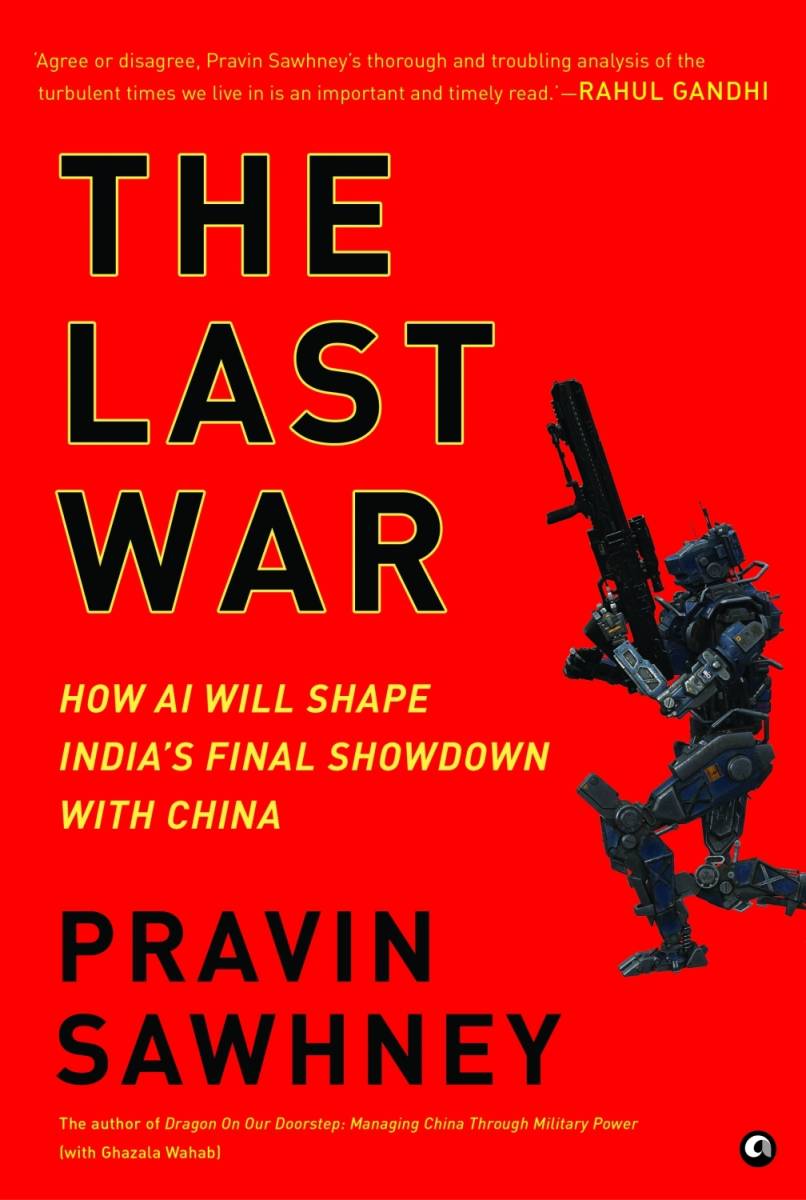In such a war, traditional conventional forces will be at a huge disadvantage, nuclear weapons will have no role to play, and the valour of individual soldiers will be of no consequence…reports Asian Lite News
If India and China were to fight a war in the near future, India faces the prospect of losing the war within ten days. China could take Arunachal Pradesh and Ladakh with a minimum loss of life, and there is very little that India could do about it, says military expert and best-selling author Pravin Sawhney.
This is because the Indian military is preparing for the wrong war, says Sawhney in his eye-opening and disquieting book, ‘The Last War: How AI Will Shape India’s Final Showdown With China’ (Aleph), as he explains in great detail how this alarming scenario could play out.
China’s war with India will be reminiscent of the 1991 Gulf War during which the US military’s battle networks connecting sensors to shooters and guided munitions with support from space assets had induced shock and awe in militaries worldwide. Similarly, China’s war with India will stun the world with the use of artificial intelligence, emerging technologies, multi-domain operations, imaginative war concepts, and collaboration between humans and intelligent robots, Sawhney writes.
China has been preparing for this since the 2017 Doklam crisis after which it permanently augmented its troops across the Line of Actual Control – leading to a stand-off that has continued for two years without any tangible signs of resolution.
The author argues that China’s superpower status will only grow and the ‘capabilities lag’ between the two countries will expand. And if there is outright war, the Indian military will be no match for China’s AI-backed war machines.
In such a war, traditional conventional forces will be at a huge disadvantage, nuclear weapons will have no role to play, and the valour of individual soldiers will be of no consequence.
India is honing its strengths to fight a war in the three physical domains of land, air, and the sea, whereas the PLA is working on becoming the overwhelmingly superior force in seven domains – air, land, sea (including deep-sea warfare), outer space, cyber space, the electromagnetic spectrum, and near space (aka the hypersonic domain).
The PLA’s disruption technologies will overwhelm India within the first seventy-two hours of hostilities commencing, and will lead to the quick end of India’s resistance, the author writes, as the primary battleground will not be on land but in cyberspace and the electromagnetic spectrum.
‘The Last War’ explains why it’s critical that India works to prevent such a war ever taking place.
It should avoid focusing on joint combat with the US, whose power in the region is weakening. Instead, India should seek to make peace with China and Pakistan, its main adversaries at the moment, while simultaneously working to enhance its military and technological strengths in areas that it hasn’t focused its resources on. Only then will the country’s borders be firmly secure, and the region’s future peace and prosperity be assured, the author maintains.

Sawhney is editor of the FORCE news magazine on national security and defence since August 2003. The author of three books – “Dragon On Our Doorstep: Managing China Through Military Power” (co-authored with Ghazala Wahab), “The Defence Makeover: 10 Myths That Shape India’s Image”, and “Operation Parakram: The War Unfinished” – he has been visiting fellow at the Royal United Services Institute for Defence and Security Studies, United Kingdom and visiting scholar at the Cooperative Monitoring Center, United States.
After thirteen years of commissioned service in the Indian Army, he worked with Times of India and Indian Express – and with the UK-based Jane’s International Defence Review.
ALSO READ-From dependence to self reliance
